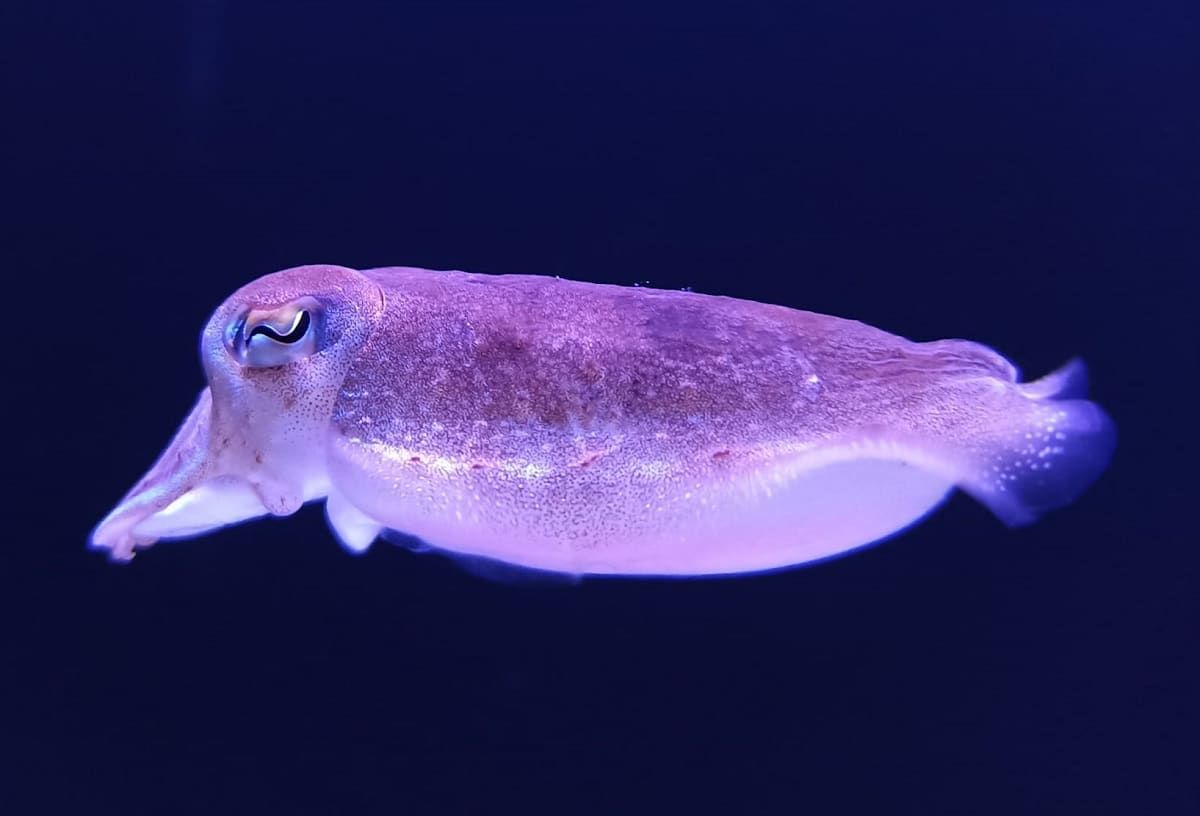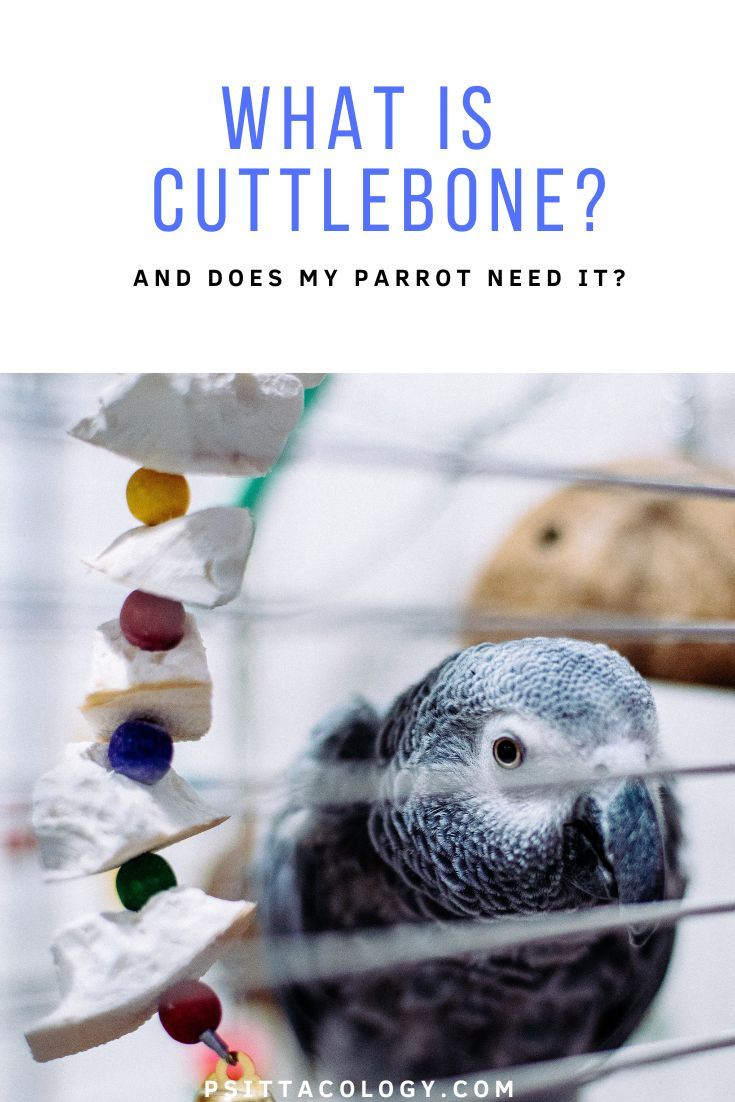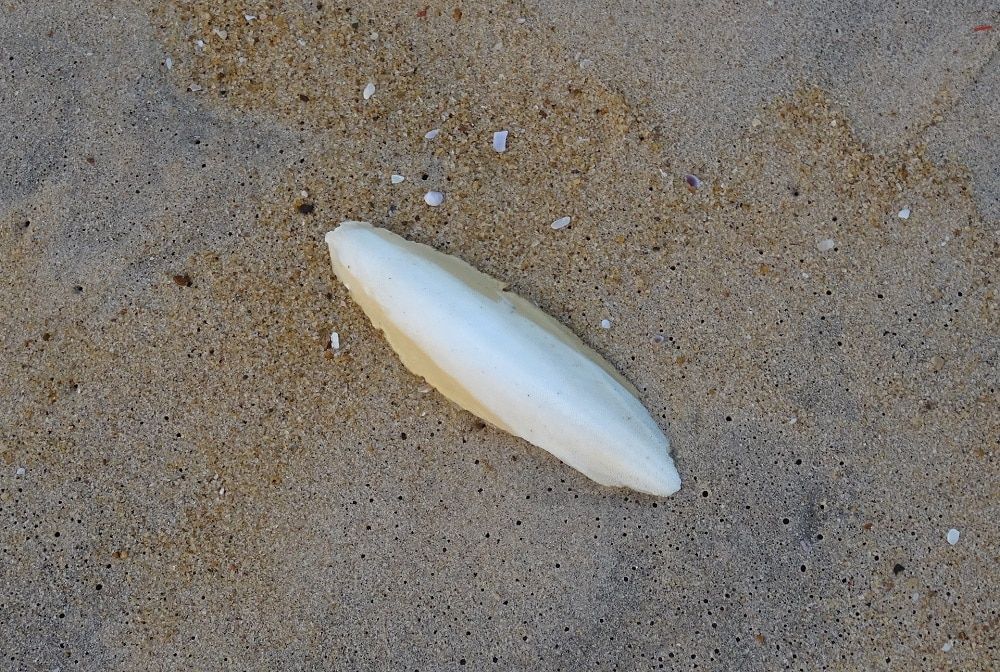If you’re interested in adding a parrot to your family, you’ve probably heard of cuttlebone. These oval white objects are ubiquitous in bird cages. But what is cuttlebone? Does your parrot need it to stay healthy?
Find out all about cuttlebone for parrots and whether your parrot cage should contain one.
This post contains affiliate links. If you make a purchase, a small percentage will go directly to Psittacology at no additional cost to you. Thank you for supporting Psittacology!
What is cuttlebone made of?
Okay, really sorry to weird you out if you didn’t know what cuttlebone is made of. Its name is actually very accurate: it’s the internal shell of members of the family Sepiidae. These marine molluscs are better known as cuttlefish.
So yeah, a cuttlebone truly is the bone of a cuttlefish, pretty much. The shell is chambered and consists of calcium carbonate. Gas inside these chambers allows this social and intelligent species to control its buoyancy.
Humans have been using cuttlebones for a long time. Nowadays you’ll mainly find it in pet cages: not just birds, but also turtles, reptiles, invertebrates and some rodents. However, in the past and even today, the material also serves other purposes.
- It can be used as a mold in jewelry making, as it’s able to withstand very high temperatures. A design can be carved in the bone and the molten metal can then be poured into that.
- It can be used as a polishing agent. Not just for polishing jewelry, but also teeth! Pulverized cuttlebone was used in toothpaste in the past.
- It used to be used as an antacid.
- It can be used to carve artistic pieces into and was previously pretty widely used for this purpose.
Did you know? You can actually find cuttlebones on the beach in some places. They float, so once a dead cuttlefish has decayed, the internal shell washes up.

What are the uses of cuttlebone for parrots?
Now that we know what cuttlebone is made of, let’s go into its uses for parrot owners. You’ll find it in the bird section at most pet stores, often with a (metal) clip to attach it to the cage bars.
As mentioned above, cuttlebone consists almost entirely of calcium carbonate (around 85%, in fact). This comes in handy for us, because just like humans, parrots need calcium in their diet to stay healthy. This essential micronutrient plays a part in many internal processes, like a healthy skeleton, normal motor function and blood clotting.
Female birds especially need plenty of calcium when they’re laying eggs, as a lot of it goes into the shells. Even the developing embryo inside the egg needs calcium, or it might hatch with all sorts of irreparable problems.
In addition to its calcium content, cuttlebone has another advantage. As mentioned earlier it makes a great polishing material and that has uses in the bird world. A parrot scraping away at a cuttlebone unknowingly polishes and keeps its beak short at the same time!
Note: Some pet stores carry colored cuttlebones. These are flavored and contain additional vitamins; some are dyed with food coloring. All this is not really necessary and a natural cuttlebone works just as well.

Do parrots need cuttlebone?
All of the previous begs the question: does your parrot absolutely need a cuttlebone in its cage? No, it’s not essential. Calcium carbonate is not the easiest form of calcium for their bodies to take up.
Additionally, there are plenty of alternatives out there, like calcium blocks that can also easily be hung in the cage. If you feed a proper diet then your bird doesn’t usually need additional calcium anyway, unless it’s breeding.
Large parrots can be too destructive and end up hurting themselves with the hard side of the bone while they’re chewing it up. The polishing advantages are also pretty minimal for their large beaks.
All this being said, I personally do have cuttlebone in my parrots’ cages. Although its cons might outweigh its pros for larger parrot species, I like it for smaller birds because:
- It doubles as a toy. It can help keep your bird busy if it likes chewing at the cuttlebone. You can try putting the bone on the floor rather than clipped to the cage bars: some parrots love pushing it around while nibbling at it.
- It does help with beak polishing and beak shortening for the small species.
- It still provides some extra calcium, which is great.
- It contains other trace elements and minerals.
Do make sure you remove the cuttlebone once the bird(s) reach the hard backside to prevent them hurting themselves. You might also want to take it out if they’ve managed to poop on it (or go for a fancy poop free cuttlebone holder!).
Did you know? If your bird doesn’t seem interested in the cuttlebone hanging in its cage, you can grind some of it up into a powder. This can then be sprinkled over some tasty seeds to make sure the parrot still gets some extra calcium!

Can you use cuttlebone from the beach?
If you live in an area where cuttlefish can be found on the beach, you might be wondering if you can harvest your own. Is it safe?
The answer is of course dependent on the level and type of pollution present in the seawater at your local beach, which can even vary from day to day! But, generally speaking, so long as the water is visually clean and safe to swim in, the risk will be minimal.
Do make sure to treat the cuttlebone first, to remove excess salt. A good wash, some rinsing and drying in the sun is advisable. Some also like to boil their cuttlebone, which may kill any harmful microbes. However, a moderate amount of the trace elements that make the bone so beneficial will also be lost.
Tip: In some countries, cuttlefish is a popular seafood. You might be able to go to the fish market, buy yourself some cuttlefish to cook up, and save the bones. This chargrilled recipe sounds pretty good to me.
If you have any more questions about what cuttlebone is or if you want to share your own experiences with this parrot food supplement, don’t hesitate to leave a comment below!
Cover photo: suppixz on Adobe Stock.



7 thoughts on “Cuttlebones For Birds | What & Why?”